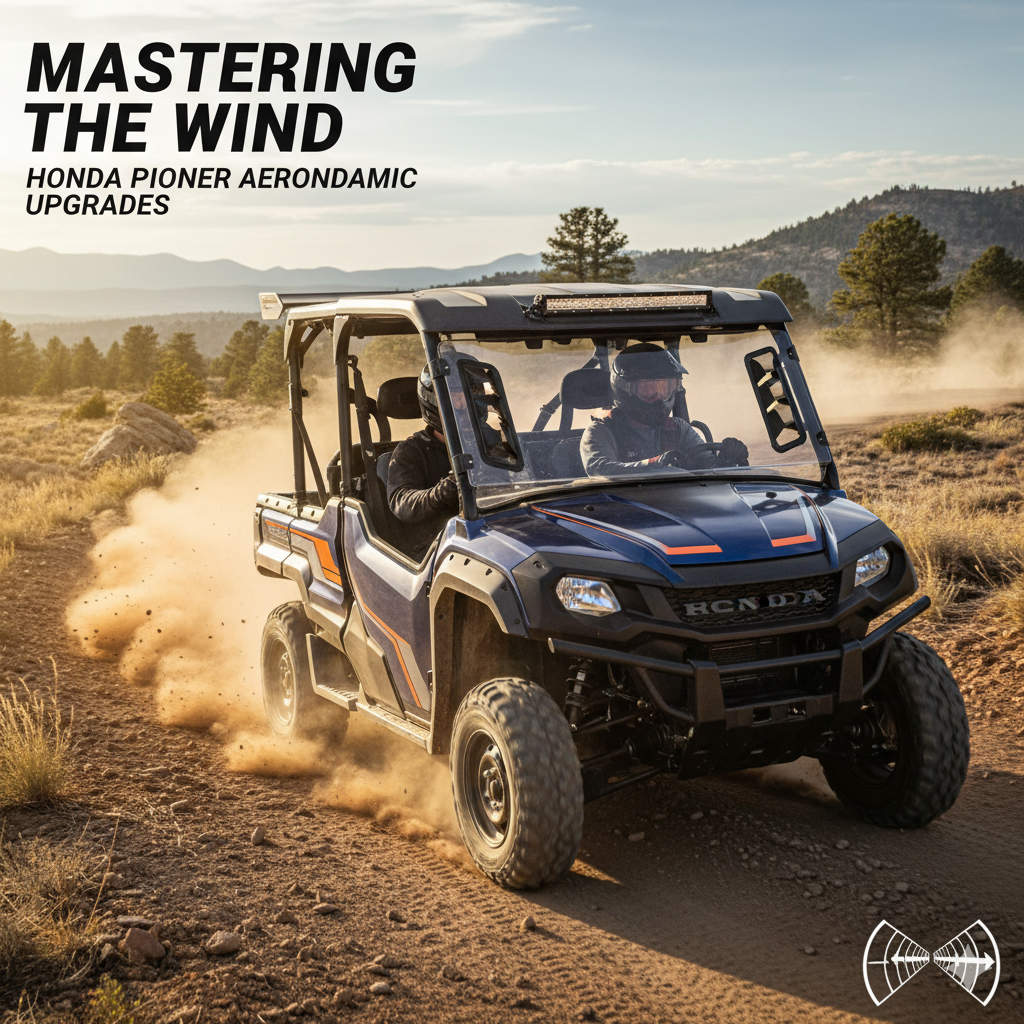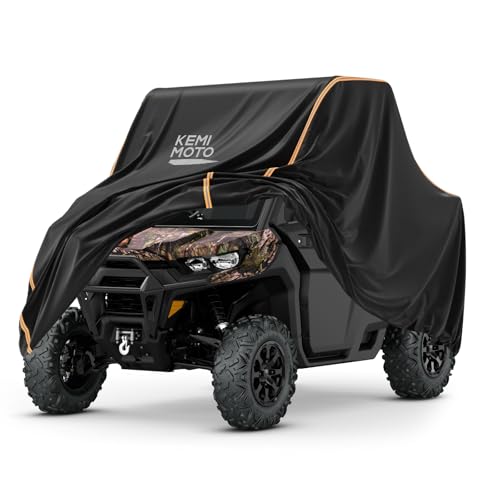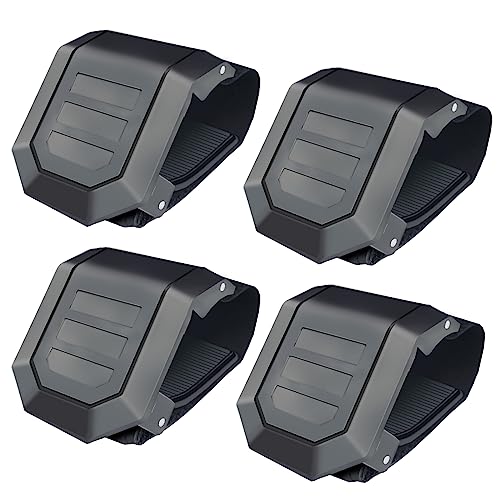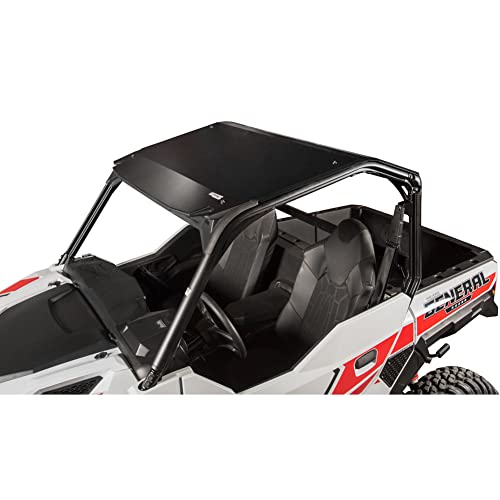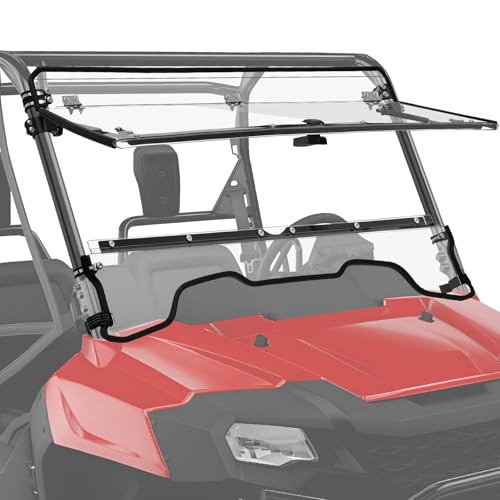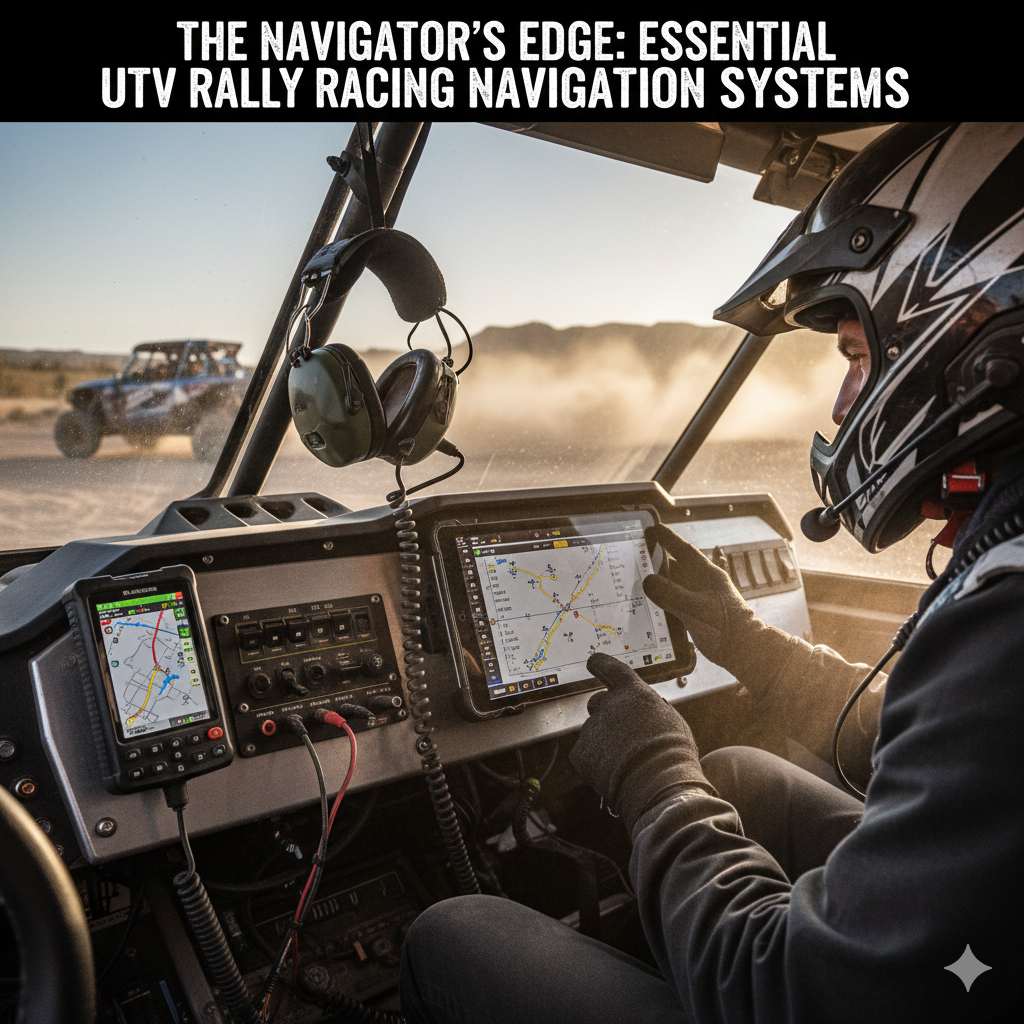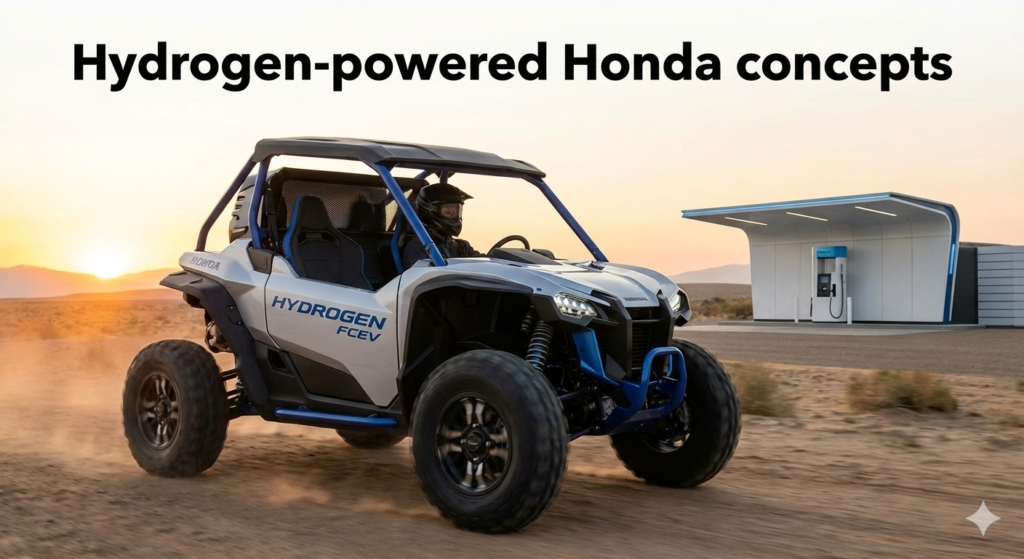Introduction: Taming the Air for the Ultimate Off-Road Experience
For many Honda Pioneer UTV owners, the thrill of off-road adventure is unmatched.
The rugged terrain, the powerful engine, and the camaraderie of fellow riders all contribute to an exhilarating experience.
However, as speeds increase and trails become more demanding, one often-overlooked aspect can significantly impact your ride: aerodynamics.
While UTVs aren’t typically designed for high-speed, low-drag performance like sports cars,
understanding and optimizing airflow can dramatically enhance comfort, efficiency, and even performance.
This guide will delve into the world of aerodynamic upgrades specifically tailored for your Honda Pioneer, helping you master the wind and elevate your off-road journey.
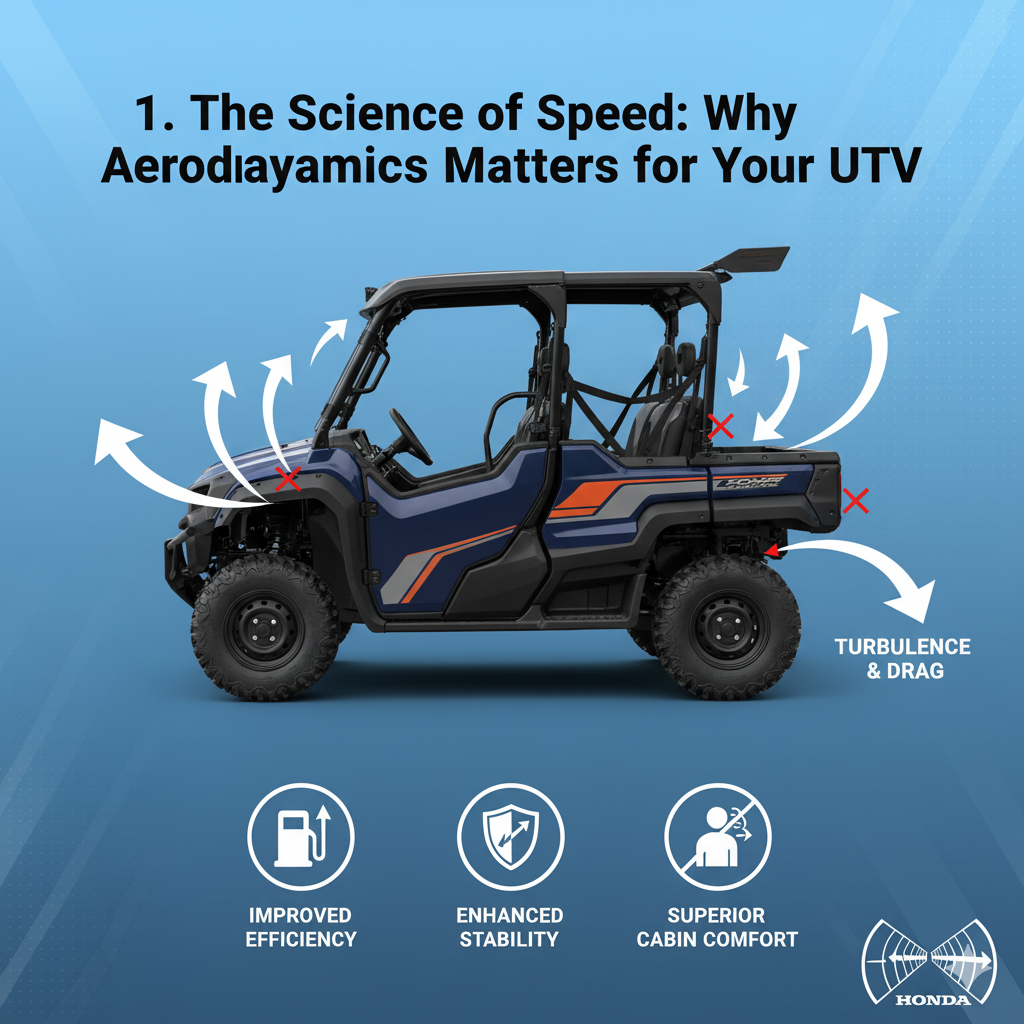
The Unseen Force: Understanding UTV Aerodynamics
Aerodynamics, at its core, is the study of how air interacts with moving objects.
For a Honda Pioneer, this interaction is constant, whether you’re cruising down a dusty trail or tackling a challenging climb.
The primary aerodynamic force at play is drag, which opposes your UTV’s motion.
The more drag your vehicle generates, the more power your engine needs to maintain speed, leading to increased fuel consumption and reduced top-end performance.
Several factors contribute to a UTV’s drag profile:
Frontal Area: This is the total area of your UTV that directly faces the oncoming air.
UTVs, by their nature, have a large frontal area due to their upright seating, roll cages, and open designs.
Shape and Smoothness: Sharp edges, exposed components, and uneven surfaces create turbulence, which increases drag.
Smoother, more streamlined shapes allow air to flow more efficiently over and around the vehicle.
Airflow Management: How air flows through and around the cabin, engine bay, and undercarriage can significantly affect internal temperatures, dust intrusion, and overall drag.
While you might not be turning your Pioneer into a sleek race car, strategic modifications can make a noticeable difference.
The goal isn’t just about speed; it’s about creating a more comfortable, efficient, and enjoyable ride by working with the air, not against it.
Essential Aerodynamic Upgrades for Your Honda Pioneer
Optimizing your Honda Pioneer’s aerodynamics involves a combination of thoughtful accessory choices and smart modifications.
Here are some key areas to consider:
1. The Windshield: Your First Line of Defense and Airflow Manager
The windshield is arguably the most impactful aerodynamic component on your UTV.
It’s not just about keeping bugs out of your teeth; it’s about managing the airflow into and around the cabin.
For Honda Pioneer owners, several types of windshields offer distinct aerodynamic advantages:
Full Vented Polycarbonate Windshields: These are a popular choice for year-round riders.
Made from durable, scratch-resistant polycarbonate, they offer full protection from debris, wind, rain, and cold.
The crucial feature is the adjustable vent, which allows you to control airflow into the cabin.
In hot weather, opening the vent helps circulate fresh air, preventing heat buildup and making the ride significantly more comfortable.
This controlled airflow also helps reduce negative pressure within the cab, which can minimize dust intrusion [2].
Flip-Up Windshields: Offering maximum versatility, flip-up windshields can be fully closed, partially open, or completely flipped up.
This adaptability is perfect for changing weather conditions or varying trail speeds.
When partially open, they can provide excellent airflow, similar to a vented windshield, while offering the option for full protection when needed.
This dynamic control over airflow is a significant aerodynamic benefit.
Half Windshields: For those who prefer an open-air feel but still want some protection, half windshields are an excellent option.
They deflect wind over your head, reducing direct wind blast while allowing ample airflow into the cabin.
While they offer less protection than full windshields,
their low-profile design can contribute to a slightly reduced frontal area and less overall drag,
especially at lower speeds or in mild climates [2].
Choosing the right windshield depends on your riding style and environment,
but opting for a vented or flip-up design can greatly enhance airflow management and rider comfort.
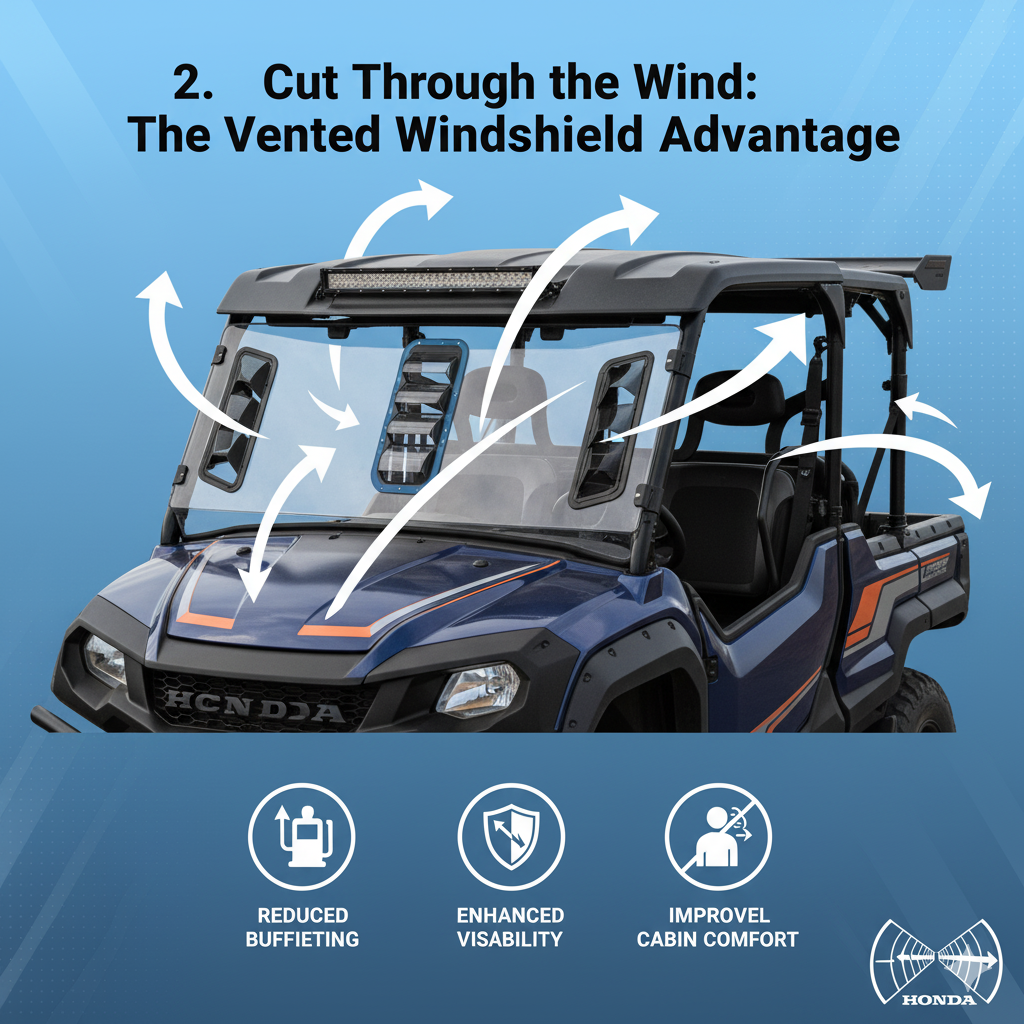
2. Aerodynamic Roofs: Shaping the Air Above
While often chosen for protection from sun and rain, the design of your UTV’s roof can also play a role in its aerodynamics.
Many aftermarket roofs for the Honda Pioneer are now designed with airflow in mind:
Sloping Designs: Some aluminum and plastic hard roofs feature a sloping design at the front.
This subtle angle helps to reduce oncoming air resistance, allowing air to flow more smoothly over the top of the UTV.
This can contribute to reduced drag and potentially improved fuel efficiency, especially during longer stretches of higher-speed riding [3].
Low-Profile Options: Beyond just aesthetics, low-profile roofs can offer a slight aerodynamic advantage by presenting a smaller profile to the wind.
They also address practical concerns like garage clearance, demonstrating how form and function can align in UTV modifications [3].
Integrated Designs: Modern roofs are often designed to integrate seamlessly with windshields and other cab enclosures, creating a more cohesive and aerodynamically efficient shell around the occupants.
This integration minimizes gaps and uneven surfaces that can create turbulence.
When selecting a roof, look for descriptions that mention
aerodynamic design or reduced air resistance, as these indicate a conscious effort to improve airflow.
3. Aero Latches and Door Modifications: Fine-Tuning Cabin Airflow
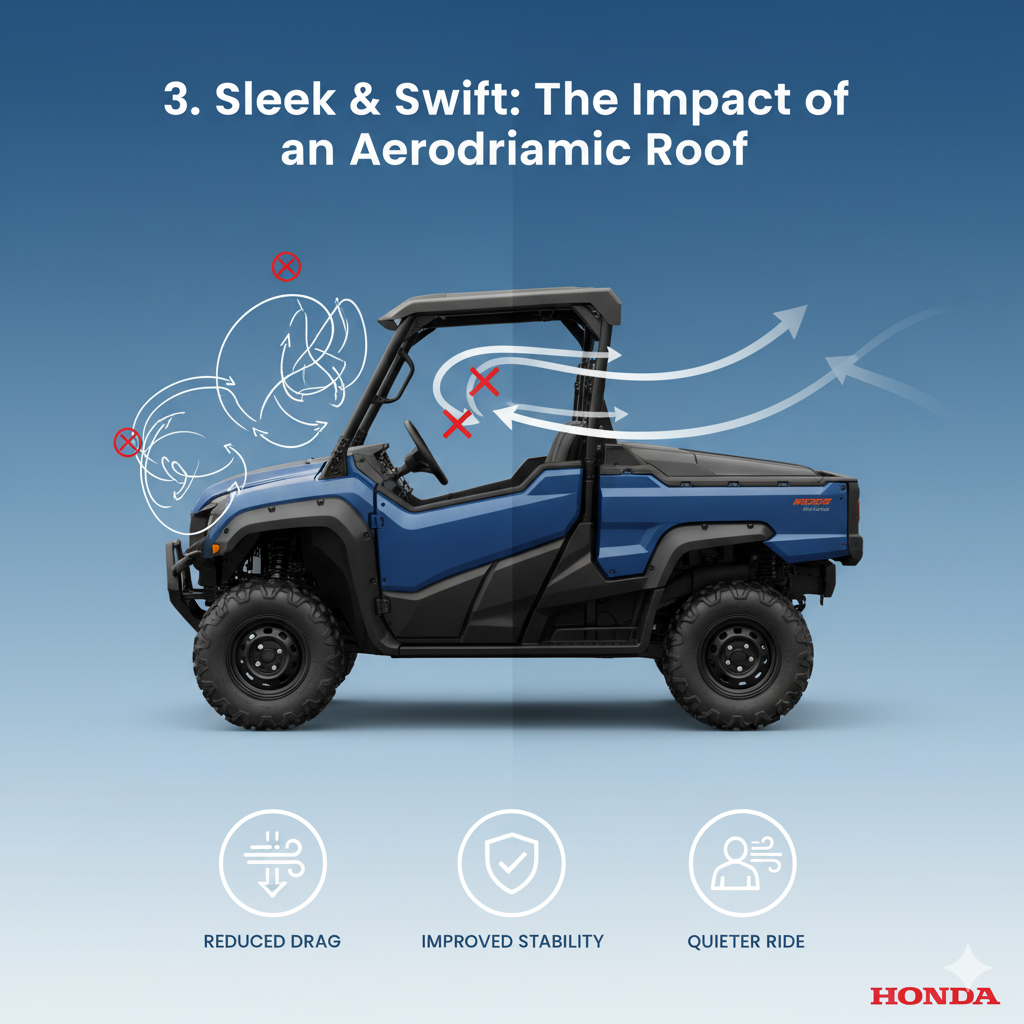
While not directly impacting external drag in the same way as a windshield or roof, internal cabin airflow is crucial for comfort and can indirectly affect the overall aerodynamic efficiency by reducing the need for open windows at higher speeds.
This is where innovative solutions like Aero Latches come into play.
Aero Latches are high-performance UTV door latch inserts designed to significantly improve airflow, reduce heat buildup, and enhance cabin ventilation.
They work by allowing fresh air to pass through the cab, effectively pushing out trapped heat and stagnant air.
This creates a much cooler and more comfortable riding environment without the need for bulky vents or complex modifications.
A key benefit is the elimination of negative pressure within the cab, which not only improves ventilation but also helps to reduce dust buildup [1].
While primarily designed for Polaris RZR and Can-Am Maverick X3 models, the underlying principle of optimizing cabin airflow through strategic door modifications is highly relevant for any UTV, including the Honda Pioneer.
Custom solutions or similar aftermarket products that allow for controlled air intake through the door mechanism could offer similar benefits.
4. Body Panels and Fenders: Smoothing the Edges
UTVs are inherently rugged, with exposed components and angular designs that are great for off-road durability but not ideal for aerodynamics.
While full aerodynamic body kits are rare for utility-focused UTVs like the Pioneer, certain modifications can help smooth the airflow:
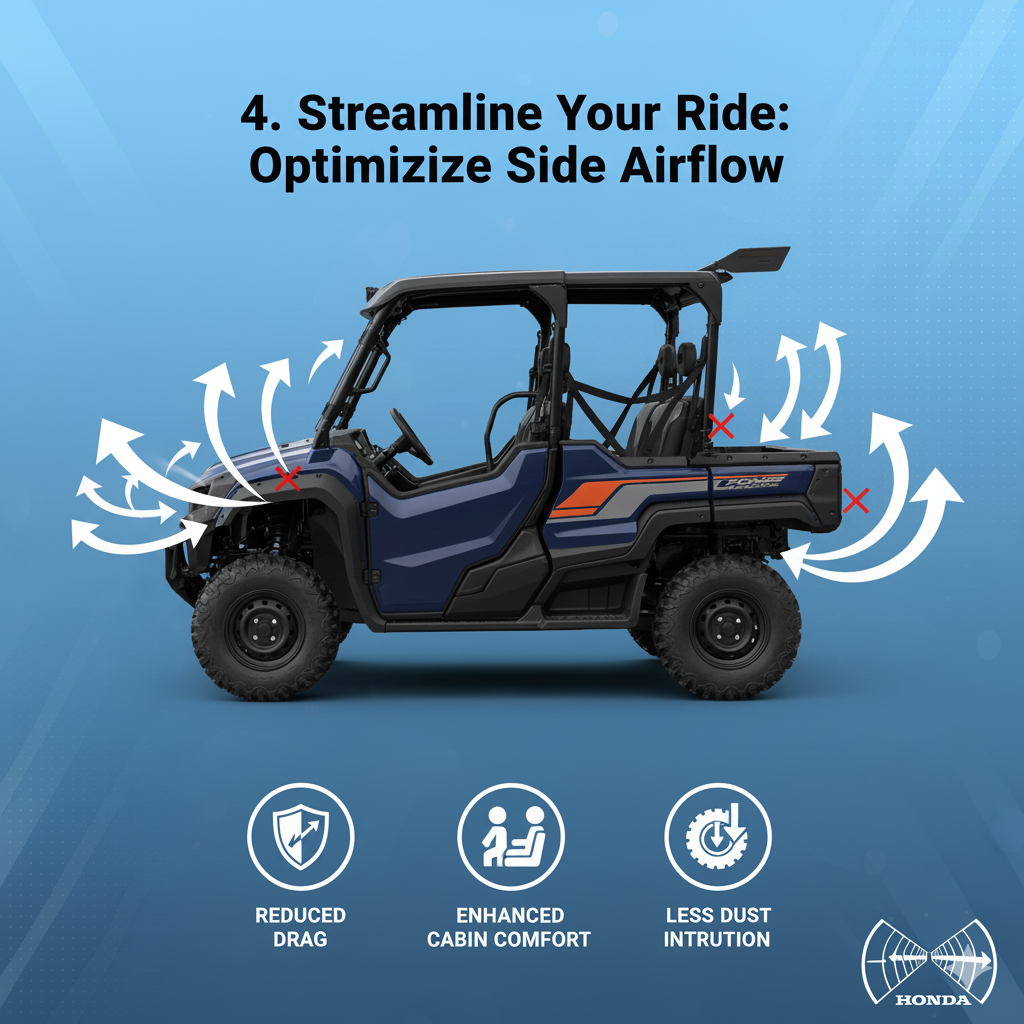
Fender Flares and Extensions: These can help manage the turbulent air generated by spinning tires, especially at higher speeds.
By extending the bodywork, they can reduce spray and potentially guide air more smoothly around the wheel wells.
Underbody Protection and Skids: While their primary purpose is protection, well-designed underbody plates can also create a smoother underside, reducing turbulence and drag from the rough terrain underneath the vehicle.
Minimizing exposed components and creating a flatter underbelly can contribute to better airflow.
Hood Scoops and Vents: Some aftermarket hood scoops are designed not just for aesthetics but also to direct air more efficiently into the engine bay for cooling or to extract hot air.
Similarly, strategically placed vents in body panels can help manage pressure differentials and improve overall airflow, contributing to both cooling and reduced drag.
5. Accessories and Storage: Mind the Protrusions
Every accessory you add to your Honda Pioneer, from light bars to cargo boxes, can impact its aerodynamic profile.
While functionality is paramount, consider the aerodynamic implications:
Light Bars: Large, exposed light bars mounted on the roof or front bumper create significant drag.
If possible, opt for integrated LED lighting within the roofline or bumper, or choose lower-profile light bars. When not in use, covers can also help smooth their surface.
Cargo Boxes and Racks: These are often bulky and disrupt airflow.
When choosing cargo solutions, look for designs that are as streamlined as possible or consider internal storage options when feasible.
Securing cargo tightly and avoiding loose items that can flap in the wind also helps.
Mirrors: While essential for safety, large, flat mirrors can contribute to drag. Some aftermarket mirrors offer more aerodynamic designs or can be folded in when not needed for high-speed sections.
The Benefits of Aerodynamic Upgrades for Your Honda Pioneer
Investing in aerodynamic upgrades for your Honda Pioneer goes beyond just looking cool.
The benefits are tangible and can significantly improve your overall UTV experience:
Enhanced Comfort: This is perhaps the most immediate and noticeable benefit. Reduced wind buffeting, better cabin airflow, and less heat buildup make long rides far more enjoyable,
especially in challenging weather conditions.
Vented windshields and Aero Latches are prime examples of upgrades that directly target comfort.
Improved Fuel Efficiency: By reducing drag, your engine doesn’t have to work as hard to maintain speed.
This translates directly into better fuel economy, allowing you to go further on a tank of gas and saving you money in the long run.
While the gains might be modest for individual upgrades, they can add up.
Increased Performance: Less drag means more of your engine’s power can be used for acceleration and top speed.
While UTVs aren’t built for breaking land speed records, any improvement in power delivery and responsiveness is welcome on the trails.
Reduced Dust and Debris Intrusion: By managing airflow and reducing negative pressure zones,
especially within the cabin, aerodynamic modifications can significantly cut down on the amount of dust, dirt, and debris that enters your UTV.
This keeps your interior cleaner and improves visibility.
Quieter Ride: Turbulence created by poor aerodynamics can generate considerable wind noise.
Smoothing out airflow can lead to a quieter cabin, allowing for better communication with passengers and a more relaxed ride.
Extended Component Life: Better airflow can contribute to more efficient cooling of the engine and other critical components, potentially extending their lifespan by preventing overheating.
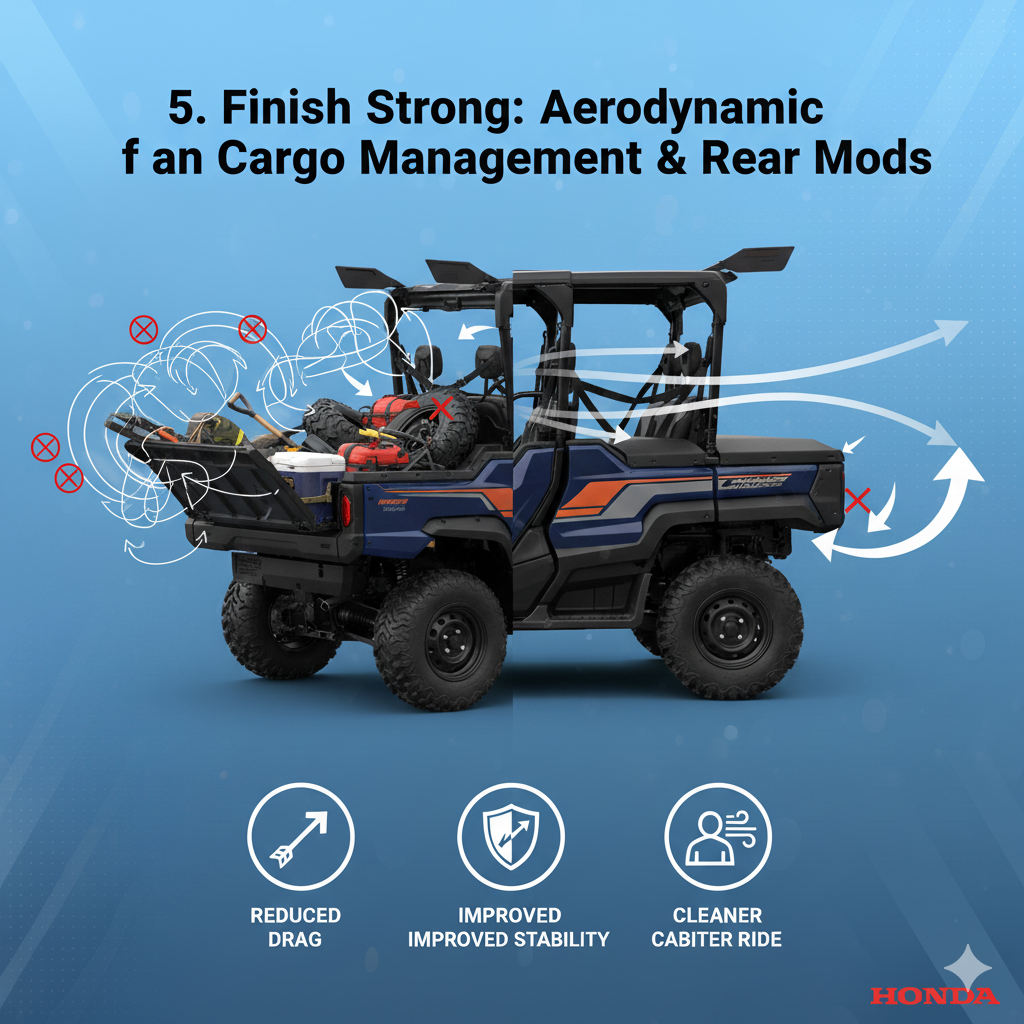
The Future of UTV Aerodynamics
As UTV technology continues to evolve, we can expect to see even more sophisticated aerodynamic solutions.
Manufacturers are increasingly focusing on integrated designs that balance ruggedness with efficiency.
Expect to see more factory-designed body panels with improved airflow characteristics,
active aerodynamic elements that adjust based on speed,
and advanced materials that allow for lighter, stronger, and more streamlined components.
The aftermarket will likely follow suit, offering innovative solutions that push the boundaries of UTV performance and comfort.
Conclusion: Ride Smarter, Not Harder
Aerodynamic upgrades for your Honda Pioneer UTV are not just for racers or those obsessed with marginal gains.
They are practical modifications that can profoundly impact your off-road adventures.
By understanding how air interacts with your vehicle and making informed choices about accessories like vented windshields, aerodynamic roofs,
and airflow-enhancing door latches,
you can transform your Pioneer into a more comfortable, efficient, and enjoyable machine.
So, take a moment to consider how you can master the wind and elevate your next ride.
Your Honda Pioneer, and your body, will thank you for it.

